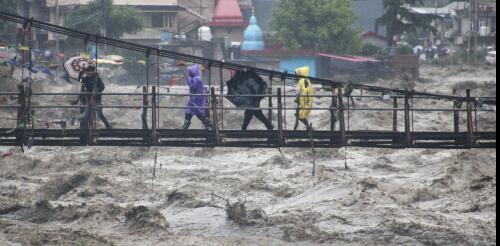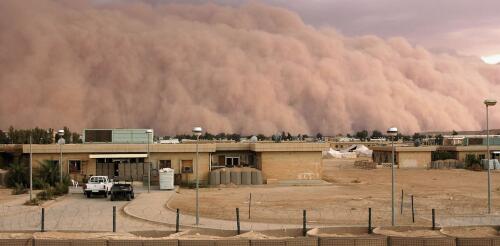Climate change
Flesh-eating bacteria sounds like the premise of a bad horror movie, but it’s a growing – and potentially fatal – threat to people. In September 2023, the Centers for Disease Control and Prevention issued a health advisory alerting doctors and public health officials of an increase in flesh-eating bacteria cases that can cause serious wound infections. I’m a professor at the Indiana University School of Medicine, where my laboratory studies microbiology and infectious disease. Here’s why the CDC is so concerned about this deadly infection – and ways to avoid contracting it. What does ‘flesh-eating’ mean? There are several types of bacteria that can infect open wounds and cause a rare condition called necrotizing fasciitis. These bacteria do not merely damage the surface of the skin – they release toxins that destroy the underlying tissue, including muscles, nerves and blood vessels. Once the bacteria reach the bloodstream,...
Torrential downpours sent muddy water racing through streets in Libya, Greece and Spain and flooded parts of Hong Kong and New York City in September 2023. Thousands of people died in the city of Derna, Libya. Zagora, Greece, saw a record 30 inches of rain, the equivalent of a year and a half of rain falling in 24 hours. A few weeks earlier, monsoon rains triggered deadly landslides and flooding in the Himalayas that killed dozens of people in India. After severe flooding on almost every continent this year, including mudslides and flooding in California in early 2023 and devastating floods in Vermont and New York in July, it can seem like extreme rainfall is becoming more common. So, what role does global warming play in this? And importantly, what can we do to adapt to this new reality? A powerful storm system in 2023 flooded communities across Vermont and left large parts of the capital, Montpelier, underwater. John Tul...
Humans have contended with dust storms for thousands of years, ever since early civilizations appeared in the Middle East and North Africa. But modern desert dust storms are different from their preindustrial counterparts. Around the world, deserts now increasingly border built structures, including urban dwellings, manufacturing, transportation hubs, sewage treatment and landfills. As a result, desert dust lifts a growing load of airborne pollutants and transports these substances over long distances. This is happening throughout the Global Dust Belt, an arid to semiarid region that stretches from western China through Central Asia, the Middle East and North Africa. Similar storms occur in the U.S. Southwest and central Australia. Global pattern of dust frequency estimated from weather records, 1974-2012. Shao et al., 2013, CC BY-ND To our thinking, modern desert dust storms have been overlooked...
In a world facing environmental challenges unprecedented in human history, it’s no surprise that eco-anxiety – a pervasive worry about the current and future state of our planet – has become an increasingly prevalent mental health issue. As people witness the devastating impacts of climate change, deforestation and loss of biodiversity, it’s only natural to feel overwhelmed and disheartened. I happen to live in Phoenix, Arizona, a “heat apocalypse” city with dwindling water supplies, so I have some skin in the game. But amid doom-and-gloom predictions, there is hope. As a therapist and clinical social work professor, I have seen firsthand how paralyzing eco-anxiety can be, and I’m dedicated to finding solutions. Here are a few evidence-based tips to tackle your climate woes. What is eco-anxiety? Eco-anxiety is a broad term that encompasses dread about environmental issues like pollution and disposal of toxic waste, as well as climate...
The 2022 Inflation Reduction Act, President Joe Biden’s landmark climate law, is now expected to prompt a trillion dollars in government spending to fight climate change and trillions more in private investment. But the law and Biden’s broader “buy American” agenda include measures that discriminate against imports. One year in, these policies, such as the law’s electric vehicle subsidies, appear to be succeeding at growing domestic clean energy industries – consider the US$100 billion in newly announced battery supply chain investments. But we believe the law also clearly violates international trade rules. The problem is not the crime but the cover-up. Today’s trade rules are ill-suited for the climate crisis. However, simply tearing them down could hinder economic growth and climate progress alike. If U.S. leaders instead take responsibility for forging an improved international trade system – rather than denying the violation...




